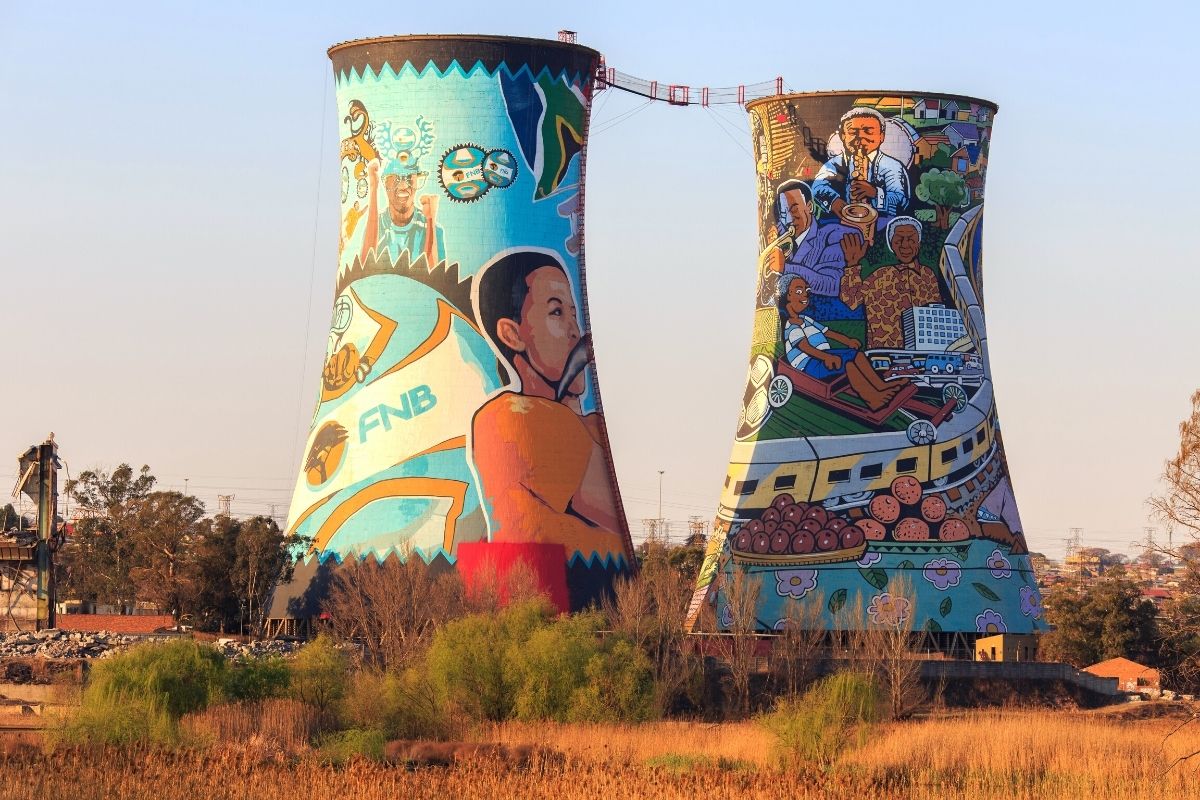Some Of Johannesburg North Attractions
Some Of Johannesburg North Attractions
Blog Article
The Basic Principles Of Johannesburg North Attractions
Table of Contents7 Simple Techniques For Johannesburg North AttractionsThe Buzz on Johannesburg North AttractionsWhat Does Johannesburg North Attractions Do?Johannesburg North Attractions Can Be Fun For AnyoneJohannesburg North Attractions - TruthsAll About Johannesburg North AttractionsThe Buzz on Johannesburg North Attractions
You ought to keep safety in mind and travelers must stay sharp at all times when in unfamiliar surroundings. Talk to the locals when you are in community to find out regarding the location you are staying in. Johannesburg North attractions. When on the road (this does not apply to purchasing malls and other secure environments) finest general guidance is to try your best to appear like a local and to prevent presenting any kind of wealth
Johannesburg North Attractions for Dummies
Professor Revil Mason O. J. (Thomson, 1946) discovered the Witwatersrand's pre-colonial history. His historical job exploded the 'em pty land' misconception, according to which the area was devoid of human habitation before the arrival of European inhabitants. In his magazines Prehistory of the Transvaal: A Record of Human Activity (1962) and Beginnings of Black People of Johannesburg and the Southern Western Central Transvaal AD 3501880 (1986 ), Teacher Mason demonstrated the degree of social and economic development in the location before Europeans set foot below.

Johannesburg North Attractions for Dummies
In 1878, David Wardrop located gold in quartz capillaries at Zwartkop, north of Krugersdorp. In 1881, Stephanus Minnaar came across gold on the ranch Kromdraai, near the Cradle of Humankind.
In March 1886, a protrusion (quickly to be called the Key Reef) was located, fairly fortuitously, on Gerhardus Oosthuizen's ranch Langlaagte. Some say that the Lancastrian coal miner George Pedestrian found this coral reef. An additional itinerant English miner, George Harrison (that had previously functioned in Australian mines) gotten a prospecting licence in respect of Langlaagte in May 1886.
He determined to proceed in a quest for greener pastures, and disposed of his Langlaagte claim for the princely amount of 10. Alas: below lay the richest goldfield ever discovered. The exploration of this abundant auriferous reef prompted a gold rush that signalled the end of bucolic tranquillity in the southern Transvaal.
It would certainly, within 6 years, end up being the largest town in southern Africa. Within a years, it would make the Z. A. R. until then an anarchical and bankrupt little state the most affluent nation in Africa. By the millenium, the Z. A. R. was to exceed Russia, Australia and the USA of America to end up being the world's leading gold manufacturer, producing greater than a quarter of the globe's gold.
All About Johannesburg North Attractions
It was referred to as Ferreira's Camp, called after Colonel Ignatius Ferreira. He was a Boer traveler upon whom the British authorities had presented the status of Buddy of the Many Distinguished Order of St Michael and St George (entitling him to the post-nominal letters C. M. G.) in appreciation for his role in the battle that had deposed the Pedi king Sekhukhune in 1879.
Soon the camp was including outdoors tents and wagons as novices got here daily from everywhere. By September 1886, some 400 people lived in Ferreira's Camp, which quickly flaunted built iron and wood structures. Two various other camps were established: Meyer's Camp on the farm Doornfontein, and Paarl Camp. The latter was nicknamed Afrikander Camp; several people from the Cape Swarm settled there.

How Johannesburg North Attractions can Save You Time, Stress, and Money.
This name obtained money by word of mouth, such that the State Assistant verified the name to the Mining Commissioner on 9 October 1886. Stands in the village were auctioned on 8 December 1886. While some stands were sold for 10, others were knocked down for as low as sixpence.
2 years later on, these erven were to transform hands for as much as 750 each. The tented camps decreased as a dorp of corrugated iron buildings established and broadened north of the mines situated along the Key Coral Reef Road. Locations such as Jeppe's Community (where working-class immigrants erected their homes) and Doornfontein (where the affluent brand-new 'Randlords' started to build their extravagant residences) were quickly included to the ever-expanding map of the town.
The Johannesburg North Attractions Ideas
Aside from the street names, there were no indicators of Johannesburg being positioned in a Dutch-speaking country. Years later, C. W. Kearns O. J. (among the very first children enrolled at St John's College in 1898) would recall: 'An unusual reality concerning Johannesburg was that, although it remained in the [Boer Republic], almost every person talked English and even the Federal government servants addressed one in English, unless they were initial dealt with in the Taal (or Reduced Dutch)'.
Britain had a passion in making certain ideal conditions for gold production on the Witwatersrand, and that the gold was exported to London rather than Berlin a vital made all the extra clamant by the Z. A. R.'s boosting toenadering with Germany. Mine proprietors got on a clash with Head find more of state Kruger, whose plan of monopolistic concessions (often granted to his cronies) avoided mining companies from acquiring supplies of materials (particularly dynamite) and labour by themselves, cheaper terms
A Biased View of Johannesburg North Attractions
In 1890, the Volksraad had actually limited the franchise business to white men who had resided in the Z. A. R. for fourteen years or longer, thus invalidating many of the immigrants (that happened to be the major contributors to the fiscus). Anxiety for the ballot was a simple pretext for advertising a various agenda; a lot of uitlanders regarded themselves as momentary site visitors and had no objective of continuing to be in the Z.
Report this page